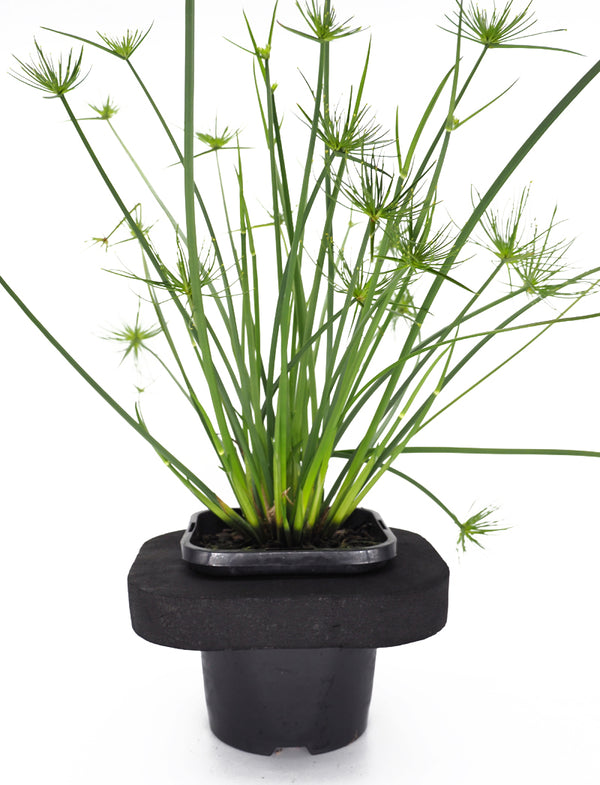

Even really small containers work easily for aquatic plants. They are easy to plant, too-just toss them into the container! Good examples of floaties are Water Hyacinths, Salvinia, Azolla and Floating Heart. They do not require being planted in a pot and they obtain 100 percent of their nutrients from the water. Picking Plantsĭisplaying beautiful aquatic plants is the reason the container is set up, so what types of plants work best? Almost any kind of floating plants are excellent for containers- especially the small “floaties,” like my good friend, Deb Spencer, calls them. These small containers do require more attention due to the need to add water more frequently. Containers as small as a quart of water work well, but may only hold one kind of floating aquatic plant. New galvanized containers and any copper container can be toxic to life, although old galvanizing that has been dulled with weathering should be fairly safe. Good examples of interesting containers are urns, crocks, half whiskey barrels (a plastic liner placed inside will seal it, if necessary), and even glass pie dishes.

In fact, most people do choose to use a container designed for other purposes. Containers glazed just on the outside are commonly available and they will work fine if properly sealed. I have heard that these heavily glazed pots are called “jars.” They can be pricey, but are very decorative. Most of these are thick plastic or pottery that is heavily glazed on both the inside and outside. There are containers made just for use as water gardens. A container that does not have holes is even better. Of course, if the container has holes, the holes will need to be sealed. Anything that is glass, plastic, ceramic or sealed wood could work. The plants can attain this richness due to their access to an unlimited amount of water.Ĭhoosing a container is the first and most important consideration. The lushness and tropical look of aquatic plants has an appeal that most people really enjoy. For many, this less-permanent type of water garden can be the first introduction to the world of aquatic plants. And they’re versatile they can stand on their own or be placed on top of a table. We will want to keep this type of water feature simple, which we’ll discuss later.


A water garden in a container is one of the easiest types of water features to create-and can be very satisfying. But how do you build a water garden without a hole in the ground? Just find a container! A Dwarf Papyrus standing among Water Lettuce.Įven large landscapes will benefit from the addition of container water gardens. All a person needs is some space outside that receives sun most of the day. For evergreen grasses this wounding will really affect their ability to live through the winter.There is a style of water feature for almost every garden, no matter how small. Dividing plants wounds them to some degree. In areas where winter temperatures remain above 35 degrees it can be considered a perennial and the following information should be useful.Įvergreen or neutral grasses are usually plants that look like grasses but aren't actually classified as grasses, they are generally called grass-like plants.ĭivide evergreen or neutral grasses and grass-like plants in spring only.Įvergreen grasses don't ever go dormant. It should not be expected to live through the winter and begin growing again in the spring. Once the grass turns brown it can either be removed immediately or removed in the spring. Where temperatures get colder than 35 degrees F, the plants should be treated as annuals. It is best to keep the soil moist, but once established they can be surprisingly tolerant of dry conditions.Ĭyperus is an evergreen or neutral grass. The Cyperus will also do well when planted in normal garden beds. If the plant is put into a pot, I would suggest plugging the hole or holes in the bottom of the pot to keep as much water as possible in the container. The root ball can be submerged but it isn't necessary. The purpose is to keep the bulk of the soil or root mass wet. The crown of the plant should never be covered in water and in fact all of these varieties can thrive in water as shallow as a few inches. The plant can be planted in pots, along the waters edge of a pond, or even in a pond. It is a very fast grower and will quickly grow when replanted in the spring. Cyperus Papyrus is not hardy enough to survive winters with freezing temperatures and it is not a candidate to overwinter inside.


 0 kommentar(er)
0 kommentar(er)
